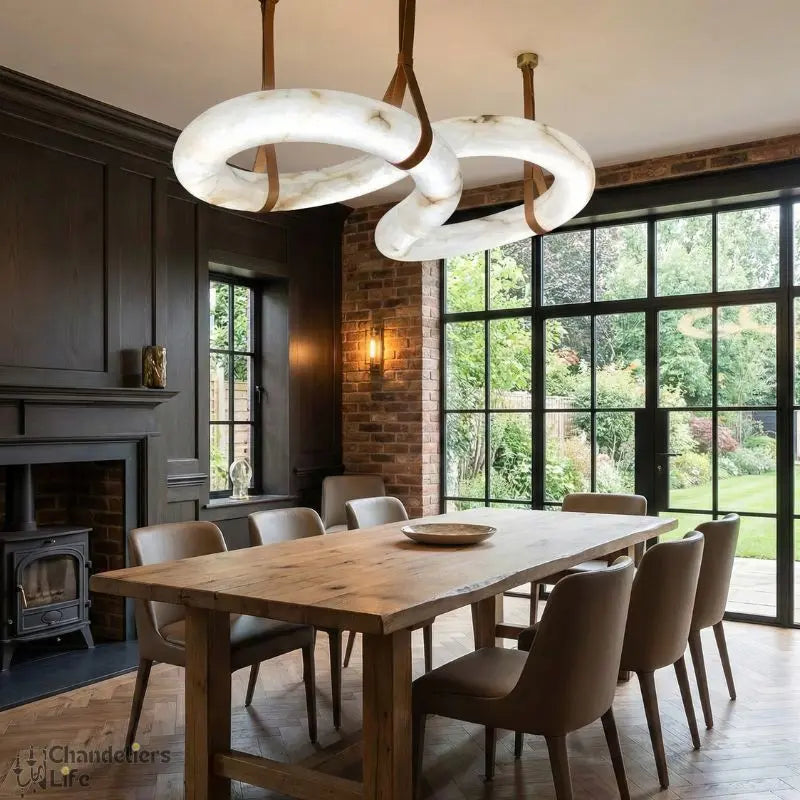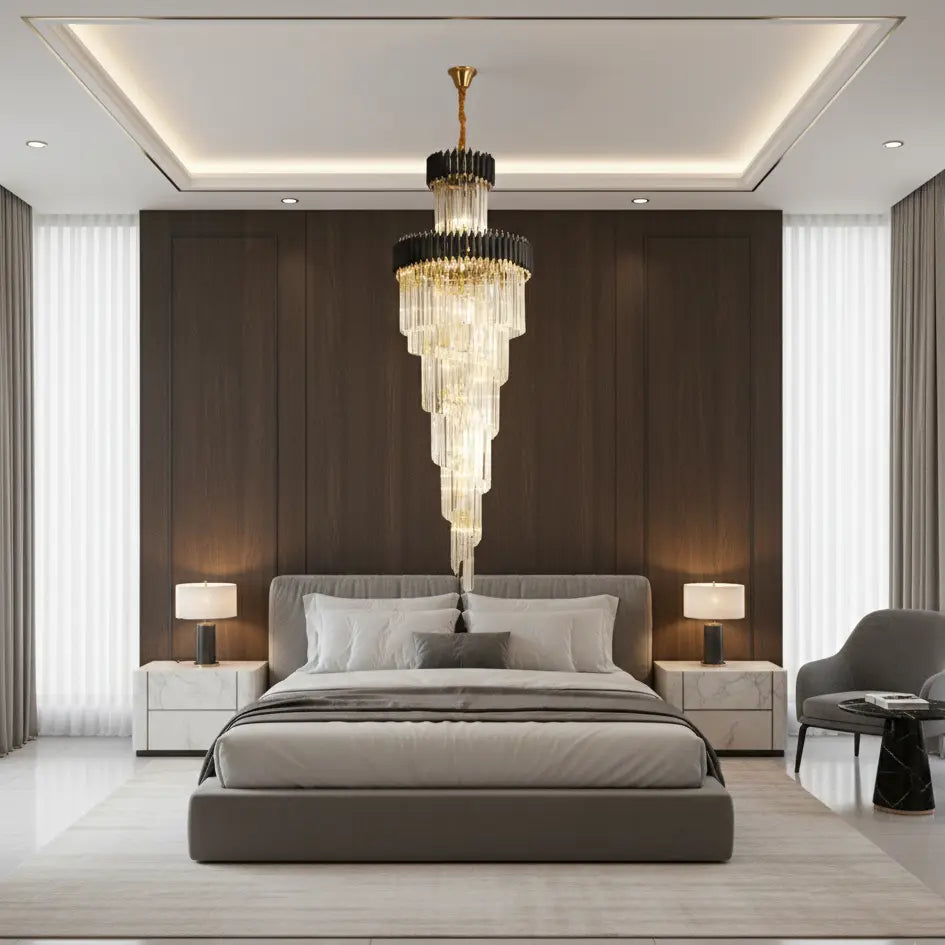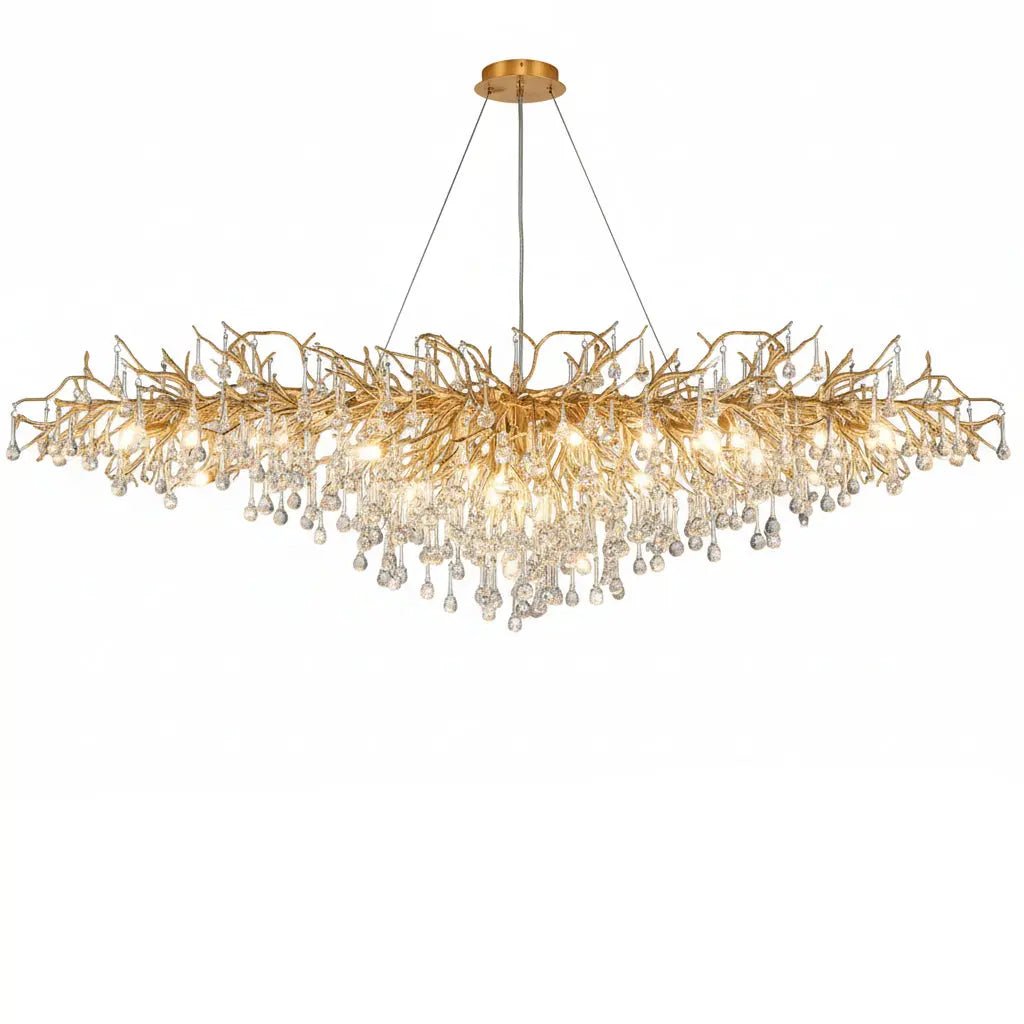Arranging your living room furniture can feel like a puzzle, but with the right tips, you can create a cozy and inviting space. Whether your room is large or small, the way you position your furniture affects both its look and functionality. In this article, we'll share expert advice to help you make the most of your living room, ensuring it's both stylish and practical.
Key Takeaways
- Leave space for traffic flow and an entry drop spot to keep the room functional.
- For a symmetrical layout, place key seating pieces near the fireplace and face them towards each other.
- Use end tables at both ends of the sofa to create convenient landing spaces.
- Pair chairs with the sofa to balance visual weight and maximize seating.
- Consider popular furniture layouts to simplify your arrangement choices.
Creating a Focal Point in Your Living Room
Establishing a focal point in your living room is essential. Whether it's a fireplace, a TV, or a large window, this main feature will guide your furniture arrangement. Decide on your focal point and stick with it to create a cohesive look.
Choosing the Right Focal Point
Sometimes, focal points appear naturally, like a built-in fireplace or a big window. Other times, you might need to create one. You can do this by hanging a large piece of art, placing a big mirror, or even using a supersized houseplant. The key is to pick something that draws the eye instantly.
Arranging Furniture Around the Focal Point
Once you've chosen your focal point, arrange your furniture to highlight it. For example, if your focal point is a TV, make sure your seating faces it. If it's a fireplace, you might want to place sofas and chairs around it to create a cozy conversation area. The goal is to make the focal point the star of the room.
Balancing Multiple Focal Points
If your room has more than one focal point, like a fireplace and a TV, you can balance them by creating secondary focal points. This could be a stylish console table or a collection of favorite objects on a bookshelf. By doing this, you keep the eye moving around the room, making the space more dynamic.
Maximizing Space in Small Living Rooms
Using Multi-Functional Furniture
In small living rooms, every piece of furniture should serve more than one purpose. Multi-functional furniture can save space and add versatility. For example, a sofa bed can be used for seating during the day and as a bed at night. Similarly, an ottoman with storage can provide a place to sit and store items like blankets or magazines.
Vertical Space Utilization
Don't forget to use your vertical space. Tall bookshelves and wall-mounted storage units can help keep the floor clear and make the room feel larger. You can also hang luxurious chandeliers and pendant lights for your home to draw the eye upward, creating a sense of height and openness.
Open Floor Plan Strategies
An open floor plan can make a small living room feel more spacious. By removing unnecessary walls and barriers, you can create a more fluid and flexible space. Arrange your furniture to define different areas, such as a seating area and a dining nook, without closing off the room. This approach not only maximizes space but also enhances the overall flow and functionality of your living area.
Traffic Flow and Entry Points
Ensuring smooth traffic flow in your living room is crucial. Make sure there's a clear path for people to move around without bumping into furniture. Think about the room's purpose and the natural routes people will take.
Symmetrical vs. Asymmetrical Layouts
Benefits of Symmetrical Layouts
Symmetrical layouts bring a sense of order and balance to any room. This type of arrangement works well in spaces of all sizes and shapes. For example, placing two sofas facing each other with a table in between creates a harmonious look. Similarly, a sofa with matching side chairs on either side is another way to achieve symmetry. This layout is ideal for those who prefer a neat and organized living room.
Creating Visual Interest with Asymmetry
Asymmetrical layouts, on the other hand, add a touch of creativity and uniqueness to your living room. While it may be more challenging to pull off, the result is often more dynamic and interesting. To balance an asymmetrical layout, use color, pattern, and scale to tie everything together. For instance, you could place a large sofa on one side and balance it with a couple of smaller chairs on the other. This approach allows for more flexibility and can make your space feel more relaxed and inviting.
Combining Both Layouts
Combining symmetrical and asymmetrical elements can give you the best of both worlds. You might have a symmetrical seating arrangement but add asymmetrical decor elements like mismatched lamps or artwork. This blend can create a balanced yet visually stimulating environment. The key is to find the right mix that suits your style and the room's function.
Experimenting with different layouts can help you discover the most comfortable and visually appealing arrangement for your living room.
Incorporating End Tables and Chairs
Optimal Placement of End Tables
End tables are essential for both function and style. Place them within easy reach of seating areas to hold drinks, lamps, or books. Consider using round tables between chairs and sofas to make it easier to move around. Nesting tables are a great option for tight spaces, offering flexibility when needed.
Pairing Chairs with Sofas
Chairs should complement your sofa, not compete with it. Arrange chairs opposite or adjacent to the sofa to create a balanced look. For a relaxed vibe, mix and match different styles of chairs. Always pair a chair with a place for a mug or lamp to make the space more functional.
Balancing Visual Weight
When arranging furniture, it's important to balance the visual weight of the room. Avoid having all heavy or all light pieces. Mix different shapes and sizes to create a harmonious look. This helps in making the room feel more inviting and well-thought-out.
Popular Furniture Layouts to Consider
Timeless Layout Examples
Simplify your options by considering timeless living room layouts that designers gravitate to for the most beautiful rooms. Here are a few living room furniture arrangement examples.
Designer-Approved Arrangements
No matter if your rooms are big or small, having the right furniture arrangement will make them more enjoyable. Check out our layout examples, plus tricks for living rooms, family rooms, bedrooms, and dining rooms. Knowing how to arrange furniture can help you navigate how a room will be used.
Adapting Layouts to Your Space
- Floating layout: If you have a living room with many windows but not enough wall space to anchor your furniture, opt for a floating furniture layout. Float your furniture a few feet away from the walls to create an island in the center of the room with a TV mounted on one wall.
- L-shaped layout: An L-shaped living room and dining room combination is considered an awkward space and presents its own set of challenges.
Consider popular furniture layouts to make your living room both functional and stylish.
Utilizing Existing Elements as Guides
Working with Architectural Features
Using existing features, such as a fireplace or window, as organizing tools or starting points will create a sense of order and calm. For example, placing two chairs by a window will block the light less than a sofa. A large rug and sofa placed symmetrically in front of a fireplace will create a strong and inviting focal point.
Incorporating Built-In Furniture
Built-in furniture can be a great asset when arranging your living room. It saves space and provides a natural guide for placing other pieces. For instance, a built-in bookshelf can serve as a backdrop for your seating area, making the room feel cozier and more organized.
Enhancing Natural Light
Natural light can make a room feel larger and more welcoming. Arrange your furniture to take advantage of windows and other light sources. Avoid placing large pieces of furniture in front of windows to keep the room bright and airy.
I hope these tips help you get your space planning wheels turning. If you have questions or need help with a tricky space, Designer on Call or Design Chat are great services for that!
When designing a space, using existing elements as guides can make the process smoother and more efficient. By leveraging what you already have, you can create a cohesive and stylish look without starting from scratch. Want to learn more tips and tricks for your home decor? Visit our website for more inspiration and exclusive offers!
Conclusion
Arranging your living room furniture doesn't have to be a daunting task. By following some simple tips and tricks, you can create a space that is both functional and inviting. Remember to leave room for people to walk through and think about how each piece of furniture relates to the others. Whether your living room is big or small, the right arrangement can make a huge difference. So take your time, experiment with different layouts, and find what works best for you and your family. Happy decorating!
Frequently Asked Questions
How do I choose a focal point for my living room?
Pick something that naturally grabs attention, like a fireplace, a big window, or a TV. You can also create a focal point with a large piece of art or a unique piece of furniture.
What’s the best way to arrange furniture around a focal point?
Arrange your main seating to face the focal point. Make sure other pieces are positioned to complement this setup, creating a cozy and functional space.
How can I make the most of a small living room?
Use furniture that serves multiple purposes, like a sofa bed or a coffee table with storage. Don’t forget to use vertical space with shelves or tall cabinets.
What should I consider for good traffic flow in my living room?
Ensure there are clear pathways for moving around. Avoid placing furniture in a way that blocks entry points or makes it hard to walk through the room.
Is it better to have a symmetrical or asymmetrical layout?
Both have their benefits. Symmetrical layouts feel balanced and orderly, while asymmetrical layouts can make the room feel more dynamic and interesting. Choose what fits your style best.
How do I balance visual weight in my living room?
Pair larger pieces like sofas with smaller items like chairs or end tables. This helps to distribute the visual weight evenly and makes the room look balanced.









































